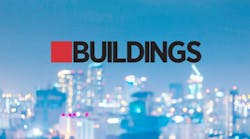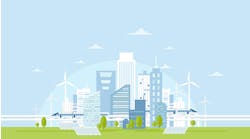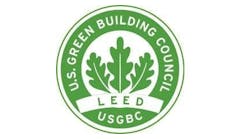The role of facilities managers is changing. No longer just focused on achieving smooth-running operations, facilities managers today are at the forefront of a growing movement to create workplaces that boost collaboration, foster innovation and attract top talent.
Working alongside human resources, IT and design professionals, they are focused on creating flexible, productive workspaces to elevate the employee experience for competitive advantage.
To accomplish this, many forward-thinking facilities professionals are borrowing design thinking and agile project management techniques from the tech world and creative disciplines to develop innovative new solutions to the challenges they face.
Design Thinking Opens New Perspectives
Design thinking presents a new way to design solutions by looking at how they can better meet the needs of users, instead of focusing on their aesthetics or the needs of the business. When it comes to facilities design, organizations need to take an employee-centric approach, exploring how workers can better engage with their environment and resources.
Design thinking can be used to tackle a variety of challenges as well as achieve goals, such as creating an exceptional employee experience, encouraging collaboration and improving productivity.
[Related: 4 Tips for a Quick RFP Process and 3 Myths Debunked]
Following is a five-step design thinking process that facilities managers, designers and others can undertake in their organizations to bring a fresh, new approach into their organizations:
Empathize
During this initial phase, facilities and design professionals explore employee behaviors and motivations. What do they need from their workspaces to do their best work? What challenges are getting in their way? Observe their work, ask a lot of questions and conduct focus groups to draw out key insights.
One way to dig deeper into employees’ needs and mindsets is to use the jobs-to-be-done framework. This approach focuses on the process employees go through as they aim to change their current situation – their way of getting a job done – to a preferred one, but can’t because there are constraints that get in their way. Use the information you gather to map the employee journey.
Design
Once you’ve explored the employee perspective as well as the factors and nuances that are involved, analyze the data and boil down your insights into a clearly defined problem that needs to be solved. The problem should address both employee needs and organizational goals.
It’s important to consider this carefully and articulate it clearly to ensure that you are solving the right issue. The innovations and solutions you design will be based on the problem you pose.
BUILDINGS Podcast
Why Don’t More Companies Have Efficiency Targets?
Ideate
This is the time to tap into creativity, using a variety of brainstorming approaches, such as mind maps, innovation exercises, etc. Suspend logic during this phase, because impractical and unusual ideas can often lead you to new ways of thinking and a fresh solution.
For example, perhaps you determined that people are still sitting with the same colleagues every day, in departmental siloes, despite the fact you’ve implemented hot-desking and more flexible seating policies in an attempt to increase collaboration.
During brainstorming you might come up with ways to configure the desk booking experience to nudge more collaborative behaviors—such as ensuring people can’t book the same desk for more than three days in a row. Or if you’re trying to boost creativity in meetings, you might come up with ideas such as branding your conference rooms with different themes to stimulate fresh thinking, or playing music to create a positive, energetic mood when people enter the room.
Prototype
Create a prototype of the idea that you want to bring it to life. Let users experience it firsthand and encourage feedback that can be used in the design process. For example, you could share an advance floor plan of the location of hot desks and solicit employee feedback, or you could run a workspace scheduling pilot to see how staff respond to improvements in the meeting room booking experience.
Test
Use the feedback you collect to learn more, make revisions and fine tune or revise your solution. Rather than viewing design as a one-and-done solution, think of it as an ongoing feedback loop and continuous improvement process.
Agile Project Management
Once you have designed an environment to improve the employee experience or achieve other goals, the next step is to focus on implementation. One of the most expedient ways to accomplish this is through agile project management.
In contrast to a longer-term process, agile implementations are quick, flexible and can incorporate changes along the way. Because organizations can find out early if they’re on the wrong track, and make adjustments as they go, they avoid wasting a lot of time and money on creating something that doesn't fit end user needs.
Agile project management breaks down siloes and relies on collaboration to benefit from the best thinking. By establishing cross-functional teams across all levels and departments in the organization to build, test and iterate solutions, facilities managers and designers can create better outcomes and get buy-in from staff.
Facilities managers and designers need to up their game to deliver a higher level of employee experience to be competitive in today’s marketplace. That means using new employee-centric techniques, such as design thinking and agile project management, that focus on collaboration and engagement.
That will enable you to develop an environment that not only exceeds employee expectations and business goals, but also successfully propels your organization forward into the next decade.
About the Author:


